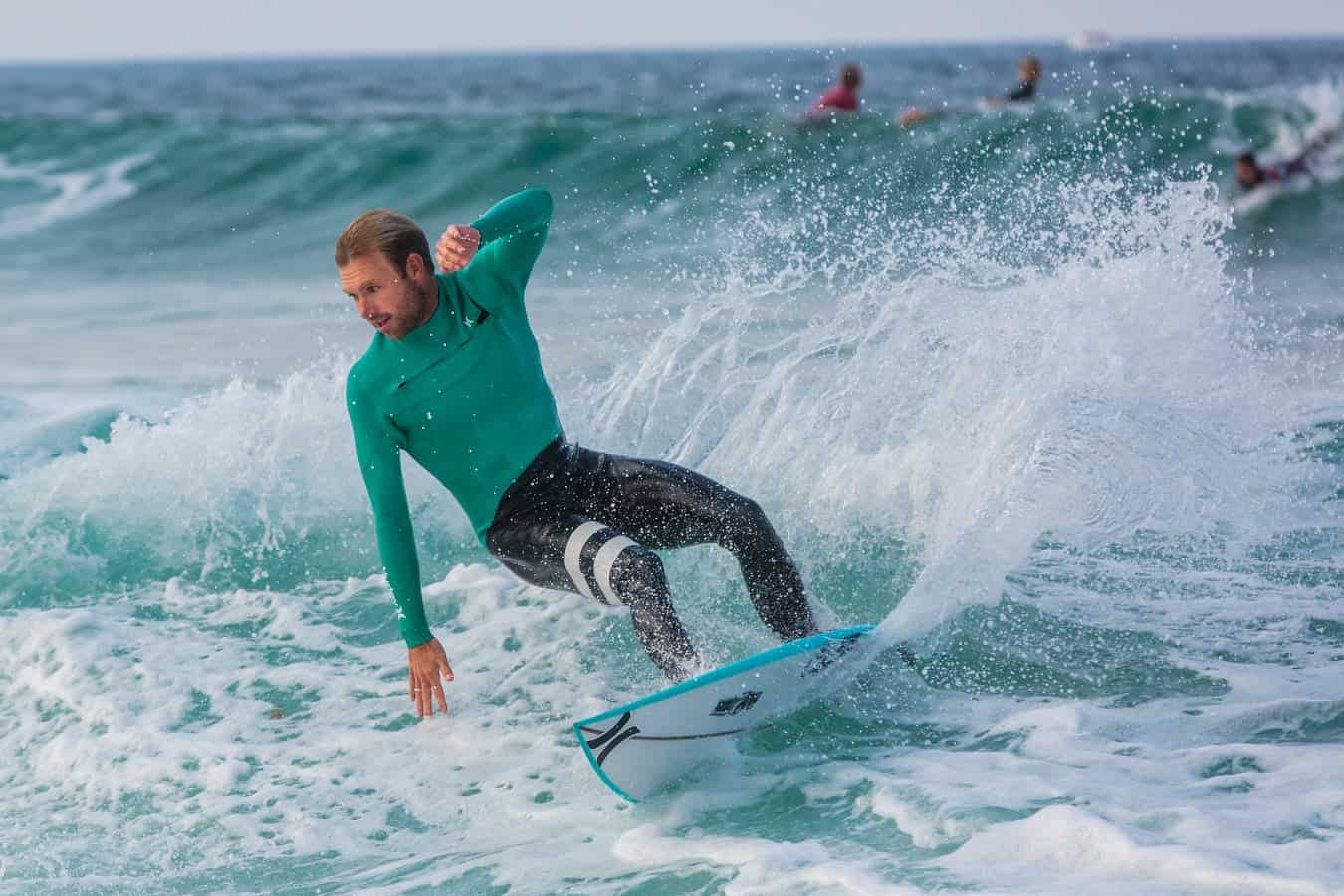It takes quite a bit of time to learn how to surf. How long this will take depends on the amount of time, you can dedicate to practicing. It takes much longer to learn how to read a wave and to stay consistent.
So, How Long Does It Take To Learn How To Surf? You can learn to surf with the help of an instructor in as little as three lessons. This will teach you the basics of paddling, balancing, and the pop up. A surfing lesson will show you the basics so that you can begin practicing on your own. Most experts will say it will take the better part of a year for a beginner who practices every weekend.
You can learn the basics during a few surf lessons, but learning to surf is in the practice you do on your own. Learning to surf is about more than being able to stand on a surfboard during a wave.
The Time It Takes To Learn To Surf
Surfing is a gratifying and rewarding sport, and it may be a little challenging to learn. Many techniques need to be mastered to work your way up to an experienced surfer. This is by no means a reason to deter from the task of learning. It is not too difficult to learn to surf if you know how to start the right way.
The most important lesson in learning to surf is commitment. Surfing isn’t a sport you show up to and do a few drills and win the championship. You have to put in the time and dedication to learn to surf.
There is no exact or specific amount of time that it will take to learn how to surf, and there are many different factors that go into the process of learning to surf. It will depend on how often and how long you will be practicing, what equipment you choose to use, which beach, weather conditions, surf conditions, type of waves, how crowded the beach is, and many other things.
No matter whom you ask, you will seem to get a different answer each time on how long it will take to learn to surf. The time it will take depends mostly on your commitment and the time you are willing to commit. If you are only able to go out on the weekends, it will take longer than practicing daily or several times a week.
No matter how often you can get away to the waves, it is possible to learn to surf. You will not learn to surf the green overnight, but you can get the basics down and be on your way to riding a wave soon.
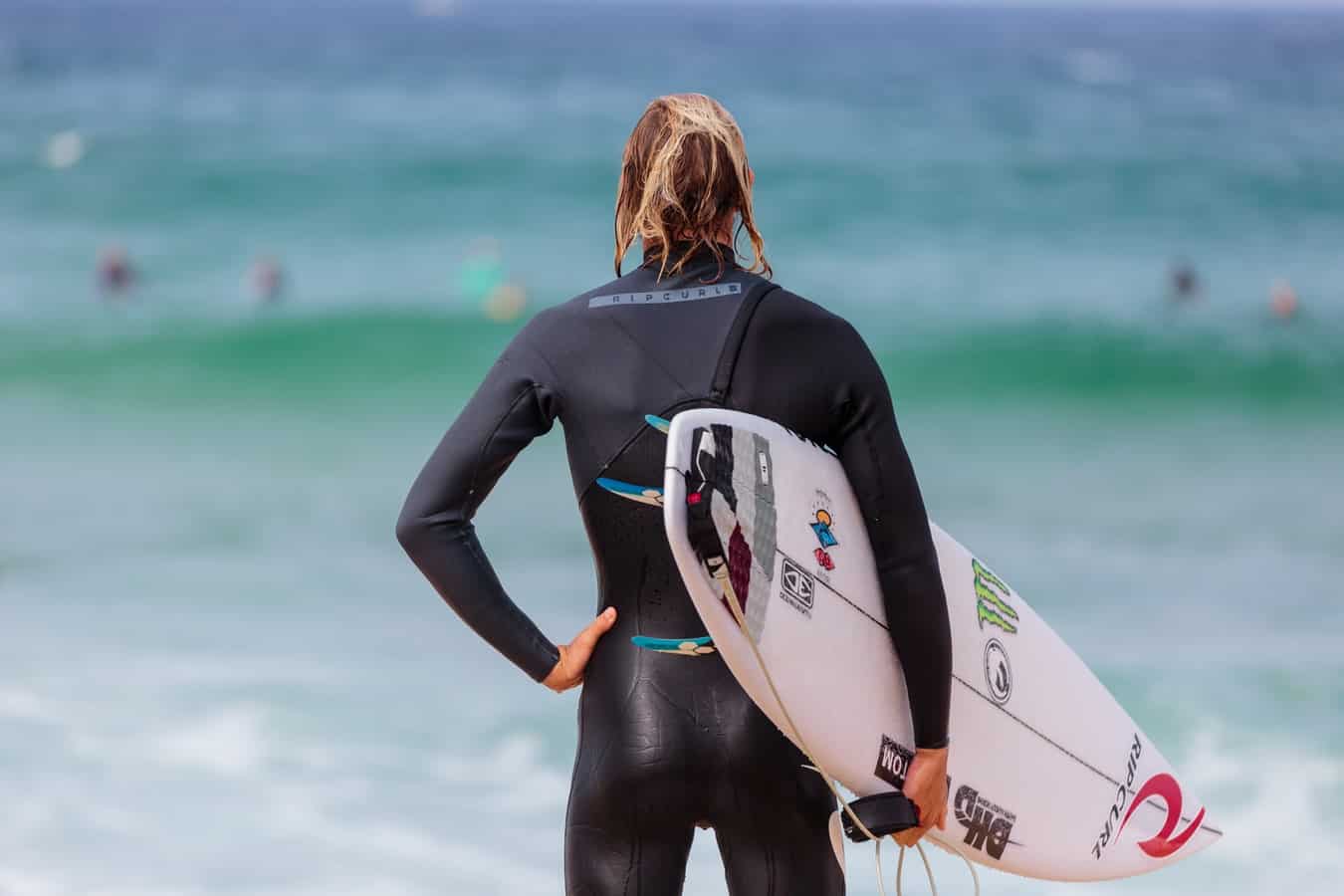
Choosing The Right Equipment
Learning to surf with the right surfboard will not only make learning insanely easier but will also shorten the time it will take you to learn. Surfing with a board not well suited for a beginner will have you struggling in the water more than hitting waves.
Longboards are the ideal surfboard for beginners because of their more excellent stability, length, width, and buoyancy. Learning on the correct board also helps to build proper technique in the beginning. Using the ideal surfboard for beginners also allows you to get to the next wave quickly instead of struggling in place in the water or not being able to move quickly enough.
For a surfboard to float, it needs to have more volume. The higher the volume, the greater the buoyancy. Greater buoyancy allows the surfboard to glide smoothly, the surfer to balance correctly, more natural pop ups, and overall stability. Surfboard volume measures in liters, and the higher the liters, the higher the volume and the better the buoyancy.
You will also need to factor in your weight when choosing your first board. The higher your weight, the higher the volume you need. To find the number of liters you need, you will divide your weight by the volume of the board.
Volume, length, and width all factor into surfboard buoyancy and stability. The volume, as we discussed, needs to be higher to give the most flotation. Width and length give the board its stability, which is vital for beginners on the water. A wider and longer board also allows beginners to learn foot placement and pop ups well.
Longboards generally come without a rocker or a low one at that. The rocker is the curve of a board from the beginning of its nose to the end of its tail. A low rocker or none at all is perfect for beginners because the smaller the rocker, the more quickly and easily the board can glide above the water.
When choosing the surfboard you will be learning on, it is generally advised to select a board three feet longer in length than you. A board of this size will suit you sufficiently out on the water and the waves.
Physical Aspects Of Learning To Surf
Surfing is a whole-body workout, and a fun one. You will use your entire body while surfing, especially your arms, while paddling. Paddling, in itself, works out your deltoids and upper back.
You will most likely be sore the day after your first time surfing, especially your arms. Surfing is a full-body and cardio workout. It is exceptionally beneficial for your body and your health. Make sure you are prepared and know what you will be physically taking on.
Stretching beforehand is always a good habit to have. Surfing is an intense workout, and just like any other exercise, you should stretch first. Focusing on your leg stretches and knees, in particular, can help to avoid knee pain in the long run.
It is no secret that an athletic person who exercises or plays sports will have an easier time physically than a person who is little out of shape. Some people say that a twenty-year-old will learn much quicker, but there have been plenty of fifty-year olds who learn just as quickly, if not more.
It is a must that you know how to swim before attempting to be in the open ocean surfing. You do not need to be a professional swimmer, but knowing the basics is crucial. As exciting and exhilarating as the ocean is, it is just as dangerous. Know the basics and learn what to do if you get caught in an undertow or any other unsafe situation.
How Often Practice Will Be
Learning to surf takes time. If you have been taught by an instructor and did well, don’t count yourself as a full-fledged surfer yet. It is one thing to surf with an instructor and an entirely different experience to surf by yourself.
Instructors search out the ideal surf conditions, best day, safest part of the beach, and even the waves you will learn on. The instructor knows the dangers to avoid, and also important surfing etiquette while on the beach with others. When you hit the waves alone, it will seem much more complicated than it did with your instructor.
That is not to say you will not do well on your own. You absolutely will do well on your own, but it will take time and plenty of practice. Expert surfers are still learning new things throughout their lives and perfecting their techniques.
You will need to surf as often as you can as well. The more often you can get to the beach, the quicker you will learn. Take every opportunity, as long as it is safe, to surf that you can while learning.
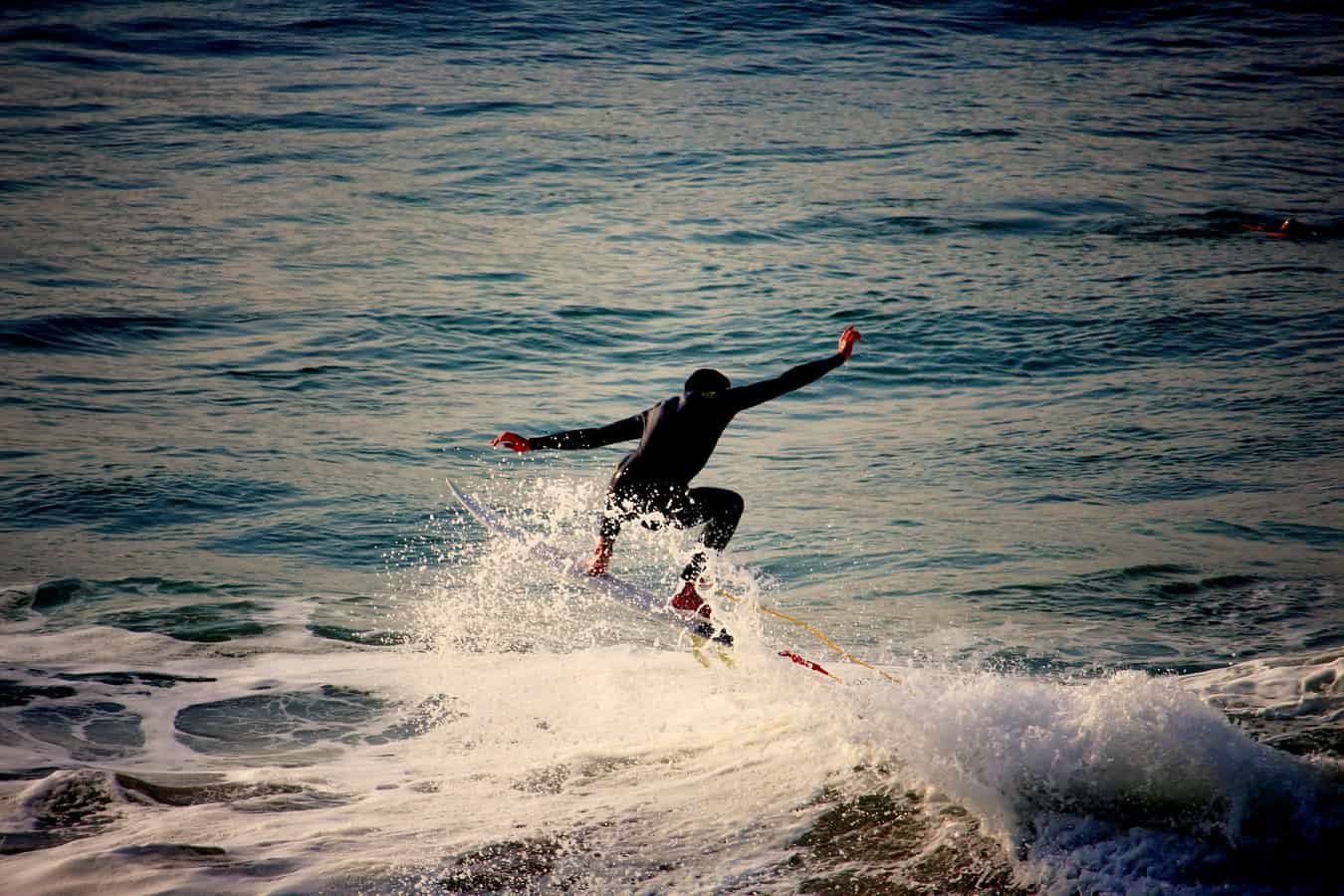
Learning The Basics Of Surfing With An Instructor
It would be best if you never went surfing alone, especially as a beginner. Always take a friend with you or work with an instructor. An instructor provides safety and is able to identify dangers, adapt the lesson, intervene if needed, and can perform a rescue if necessary.
There are many advantages to working with an instructor. An instructor has experience in teaching people who have never surfed before. The amount of time it will take to learn to surf will significantly decrease if working with an instructor.
An instructor will pre-select the surfing site, evaluate risks, provide equipment for beginners, and evaluate the surfing conditions for the day and time. The instructor will also place the student in the best position to catch a wave, will pick the timing, and will show the student when and where to paddle to catch a wave.
Every instructor has their way of teaching how to surf, but most generally follow the same steps of instruction. You instructor will most likely use a step by step progression to help you master the skills you need to be on your way to surfing. It works very well to learn to ride on the stomach first, then to ride on the knees, and finally to stand up afterward.
After learning with an instructor, it is best to find a mentor or more experienced surfing friend to help with learning more about the sport. Quite a bit goes into being safe and becoming a confident surfer. It is always a good idea to have someone who knows surf conditions and when conditions may be dangerous.
Learn To Study Surf Conditions
Just as important as knowing how to catch a wave, is knowing the surf conditions. Knowing the surf conditions where you will be surfing can tell you what equipment to bring with you and what time of day and even what day will be best to go. You can also know what types of waves will be available that day.
As a beginner, you will need to know what surf conditions are best for you to surf in, and which situations you should avoid. There will be days that are better suited for intermediate or expert surfers. It is best to always surf the conditions you know that you can handle.
Always remember the tide comes in twice a day, every twelve hours. Instead of sitting all day trying to guess when waves will be, check your surf report and learn how waves react to the tide. You may be more inclined to do your practice in low tide.
Factors such as if the surf area is sandy or rocky, a reef, and how tide affects that area all contribute to how your surf practice will turn out. You wouldn’t want to waste most of one of the few days you have to surf on floating on the board waiting for waves.
With today’s technology, surfers have a much easier time finding the surf conditions for their surf day. There are numerous online websites you can visit that will give you a surf report for your area or the area you plan to surf. You will see reports on wave type and size, swell period, wind direction, and tide.
You can determine which size waves will be out when looking at the surf report. Swell period and wave height will give you a good idea of what size waves will be out that day. Most of these surf reporting websites have beach cams that you can watch and view the beach.
You may even study the cams for a pattern and get to know the surf conditions in your area. It will be a great way to see when the tides are coming in and what the surf conditions are like near tides.
Tide charts are an excellent tool when researching surf conditions. These charts show the effects of low and high tides in almost all locations. NOAA Center for Operational Oceanographic Products and Services (CO-OPS) has data for over 3,000 locations online in the United States. This website holds data for up to two years past, present, and future for all of its listed areas.
The benefits this website provides is astounding and incredible. You can look into any given day within the last two years, or next year, or next week, and find the effects of the tides in any surf area. You can plan your surfing ahead of time knowing how the surf conditions were last week, or last year, or last month on that day.
It is a good idea to take notes of all research you have done into the surf conditions, but most importantly, to take note while out practicing. You should note the conditions during the times of day you are surfing and whether you preferred surfing then or not. Always surf the conditions that suit your ability and that you feel comfortable with.
As a beginner, you will most likely have a board best suited for a beginner. If you are using multiple boards, use your research you have done ahead of time to know which board and gear are appropriate to take out. These habits will aid in safety, get the most out of your practice time, and generally make things easier for you.
The Basics You Will Need To Learn
Once you have the basics down, you will be ready to catch some waves. Your beginning basic techniques are crucial to your surfing now and in the long run. It is not as easy to have to learn proper basics all over again after learning them the wrong way. Learning your basics the correct way will make surfing more manageable and is better for you physically.
How To Position Yourself Correctly On Your Board
Laying on your board on your stomach will always be your starting position. You will paddle on your stomach, and you will be on your belly to pop up properly. It is vital that you learn this correctly.
Your surfboard is made to float and always to want to face the same way. If you have a board with enough flotation, you will only need to worry about positioning yourself correctly.
You will need to lay on your board on your stomach once you get into the water. Keeping your feet together, place your feet at the tail of the board. With wax or marker, mark an eye-level line just where your eyes meet the board.
If the nose of your board tips into the water, this is called pearling, and you will need to move back farther toward the tail. Too much weight on the back of the board will cause it to cork, meaning the tail will dip in the water. In this case, you will need to move up towards the nose a bit. You should be able to lie flat on the board while keeping the board flat on the water.
Line your body up in a straight line, legs together, and arms evenly over the sides. Do not lean or lay more on one side. You will sink on whichever side has the most weight if you are not even on the board. Imagine a straight line down the middle of your board, and lay on that line.
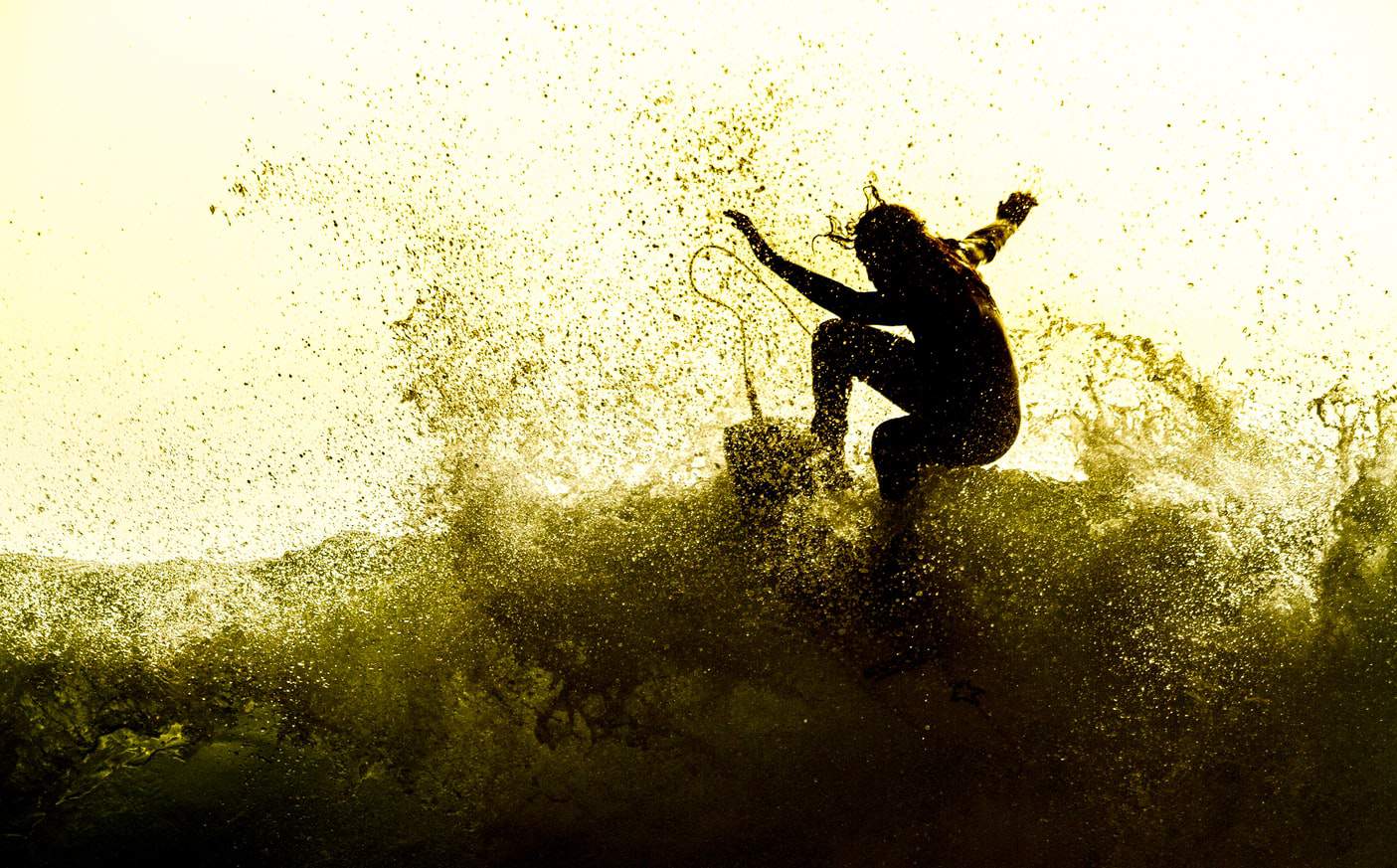
Paddling Your Surfboard
After positioning yourself correctly on your stomach, you will now be ready to paddle. Always keep your chin up off of the board while looking ahead. Keeping your chin up gives you visibility of the waves and more stability.
Paddle each arm one at a time, not together at the same time. Using your arms at the same time will cause you to slow down and then speed up, keeping your speed inconsistent.
Using long, deep paddles as opposed to short and shallow will give more propulsion and allow you to glide quickly through the water. Remember to bend your arms while paddling and develop a rhythm switching between your arms.
Sitting On Your Board
Staying calm with as little movement as possible is the key to sitting on your surfboard in the water. When you first begin, you will be a bit wobbly, and that is normal. After a while of surfing you will be a little calmer and at ease in the water. That is when you will find the most stability.
Sitting on your board will allow you to watch for waves from a higher perspective. You will be able to turn your board faster to catch a wave.
To avoid falling backward when waves pass you by, sit just a bit below the middle of the board. This rule applies to all surfboards, no matter the size or the model.
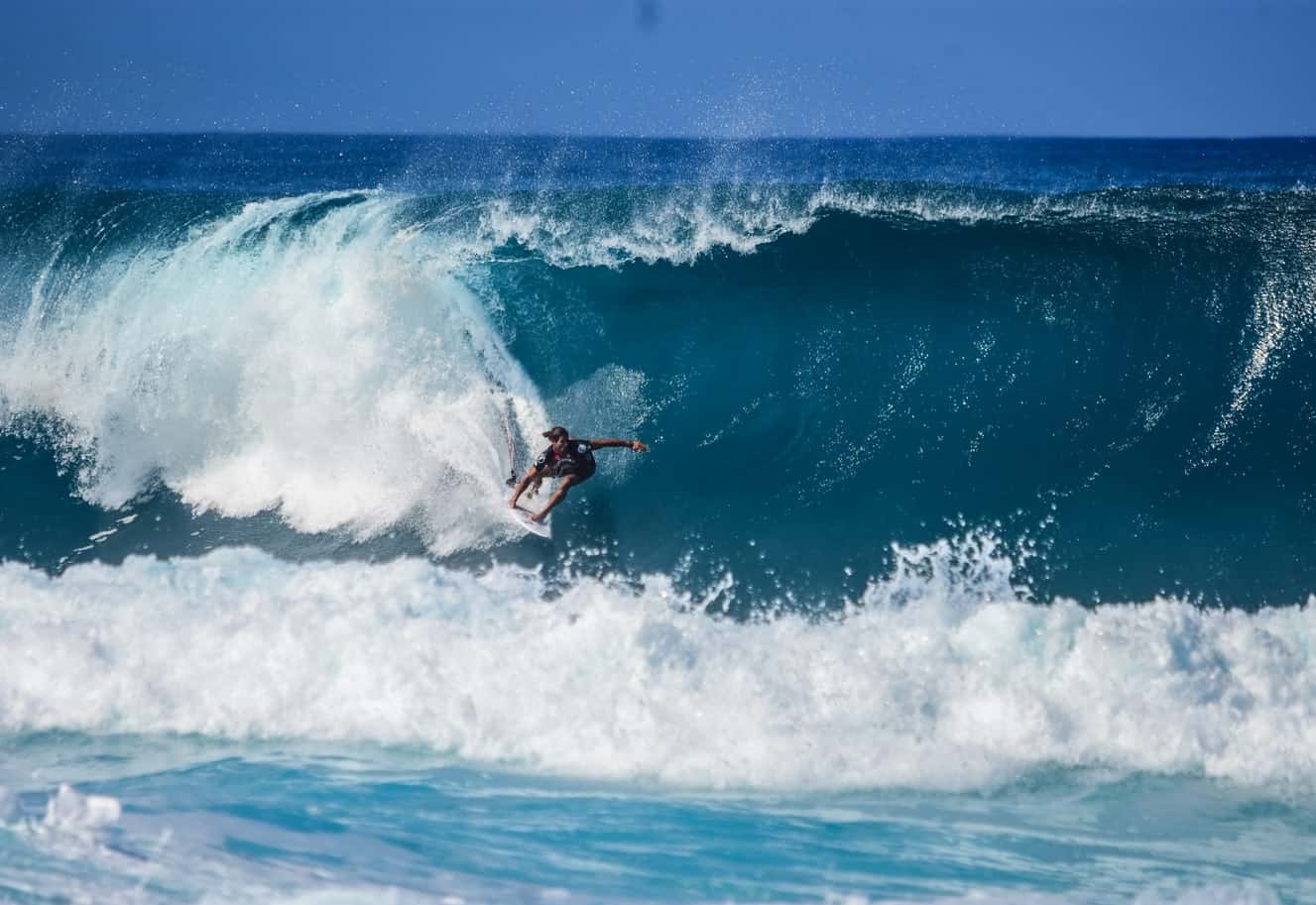
The Pop Up
Now comes the moment you have most likely been waiting for. Before you jump into it, take a moment and breathe. Think of how far you have come to accomplish your dream. You are here, you are on the water, and you are learning your moves. You are in the moment, experiencing the thrill and the peace that only the ocean can provide.
You will need your confidence and your focus for this next step. Before you make your first attempt, be warned that you will fall many times. The waves will pound you, and it will happen multiple times, repeatedly. Do not be discouraged; it helps you learn, and it happens to us all.
Standing on your board will come second nature to you after a while. Moving to a standing position on your board is referred to as The Take Off, or Pop Up. The take off, or pop up, can be done in several ways; however, the most common technique is best for beginners.
Practicing your take off can be done before being in the water. Consider practicing on the beach on top of your board, or maybe at home. Having someone with you to help you adjust your pop up is a great idea, or practicing in front of a mirror works excellent too.
When practicing these steps, move slowly at first until you can get your speed and balance up. Once you have mastered these steps, you will be well on your way to riding the waves.
- With your head up, lie on your chest looking ahead
- Place both hands flat on the board even with your shoulders
- Keep your palms down on the board; you will be in a position similar to a push-up
- Leave space between yourself and your body and the surfboard
- Your toes should remain on the board’s tail
- Now push your upper body up while keeping your hands under your pectorals and at the same time sweep your feet up under you
- As you sweep your feet up, slide your back foot up to the position opposite your knee
- Slide your front foot up between your hands
- Keep your body low, in a crouching position at the beginning of your pop up; this will give you more stability
- Move your arms straight out to each side and remain low for balance
- Once you feel balanced and comfortable, you can stand up
- Keep your feet shoulder length apart and your feet on the board’s stringer
Safety And Surfing Etiquette
Now that you have the basics down, you will need to keep in mind safety and surfing etiquette. Both are equally important, and surfing etiquette keeps you and others safe also. Safety precautions and
etiquette will go a long way on the water.
Here are simple safety and etiquette rules to follow:
- Always surf with a buddy
- Wear a safety rope that attaches from the ankle to the board
- Have a nose guard on your surfboard to prevent dangerous impacts from the nose
- Never put the board between yourself and oncoming waves
- Stay a safe distance of 15 feet from others to avoid a collision
- Do not push your board through the water fin or tail first; fins are made to point the nose first, if you push it the other way, this can be dangerous as the board will try to pull around
- As a beginner wear a vest, t-shirt, or rash guard to avoid a rubbed rash from the board
- If you lose your board, look for it right away; loose boards can be a danger to you and others
- Don’t drop in, or steal, another persons wave; quality waves are only meant for one person
- Look to the right and left before going to a wave to see if anyone is catching the wave
- A surfer catching the wave further inside closer to the peak has priority because they will have the longer ride
- Choose your surf area according to your ability

